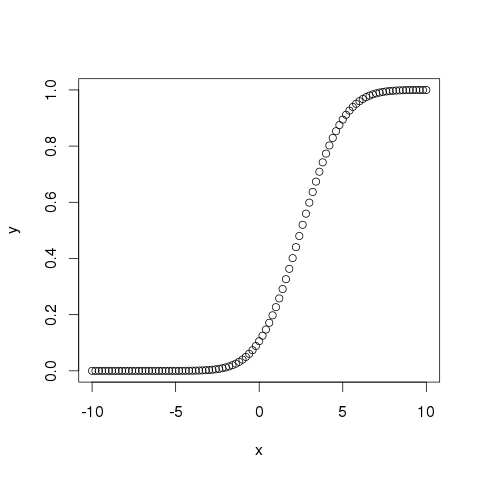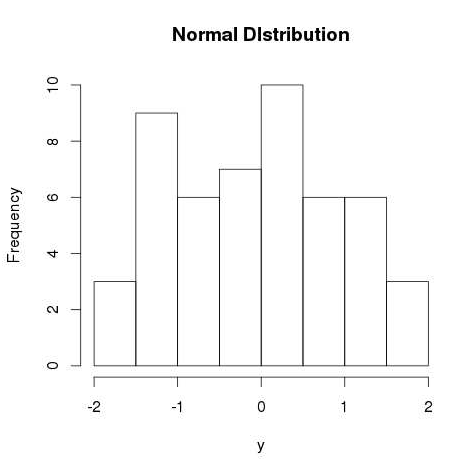R language standard distribution
May 12, 2021 R language tutorial
Table of contents
In random collections of data from independent sources, the distribution of data is usually observed to be normal. T his means that when we draw a graph of the count of variable values on the horizontal axis and values on the vertical axis, we get a bell curve. T he center of the curve represents the average of the dataset. I n the figure, 50% of the values are on the left side of the average and the other 50% are on the right side of the chart. T his is statistically referred to as a normal distribution.
The R language has four built-in functions to produce a normal distribution. T hey are described below.
dnorm(x, mean, sd) pnorm(x, mean, sd) qnorm(p, mean, sd) rnorm(n, mean, sd)
The following is a description of the parameters used in the above features -
-
x is the vector of the number.
-
p is the vector of probability.
-
n is the number of observations (sample size).
-
mean is the average of the sample data. I ts default value is zero.
-
sd is a standard deviation. I ts default value is 1.
dnorm()
The function gives the height of the probability distribution of a given mean and standard deviation at each point.
# Create a sequence of numbers between -10 and 10 incrementing by 0.1. x <- seq(-10, 10, by = .1) # Choose the mean as 2.5 and standard deviation as 0.5. y <- dnorm(x, mean = 2.5, sd = 0.5) # Give the chart file a name. png(file = "dnorm.png") plot(x,y) # Save the file. dev.off()
When we execute the code above, it produces the following results -

pnorm()
The function gives the probability that the normal distribution random number is less than the value of a given number. I t is also known as a "cumulative distribution function."
# Create a sequence of numbers between -10 and 10 incrementing by 0.2. x <- seq(-10,10,by = .2) # Choose the mean as 2.5 and standard deviation as 2. y <- pnorm(x, mean = 2.5, sd = 2) # Give the chart file a name. png(file = "pnorm.png") # Plot the graph. plot(x,y) # Save the file. dev.off()
When we execute the code above, it produces the following results -

qnorm()
The function takes the probability value and gives the number that the cumulative value matches the probability value.
# Create a sequence of probability values incrementing by 0.02. x <- seq(0, 1, by = 0.02) # Choose the mean as 2 and standard deviation as 3. y <- qnorm(x, mean = 2, sd = 1) # Give the chart file a name. png(file = "qnorm.png") # Plot the graph. plot(x,y) # Save the file. dev.off()
When we execute the code above, it produces the following results -

RNORM()
This function is used to generate random numbers that are normally distributed. I t takes the sample size as input and generates many random numbers. L et's draw a histogram to show the distribution of the resulting numbers.
# Create a sample of 50 numbers which are normally distributed. y <- rnorm(50) # Give the chart file a name. png(file = "rnorm.png") # Plot the histogram for this sample. hist(y, main = "Normal DIstribution") # Save the file. dev.off()
When we execute the code above, it produces the following results -
